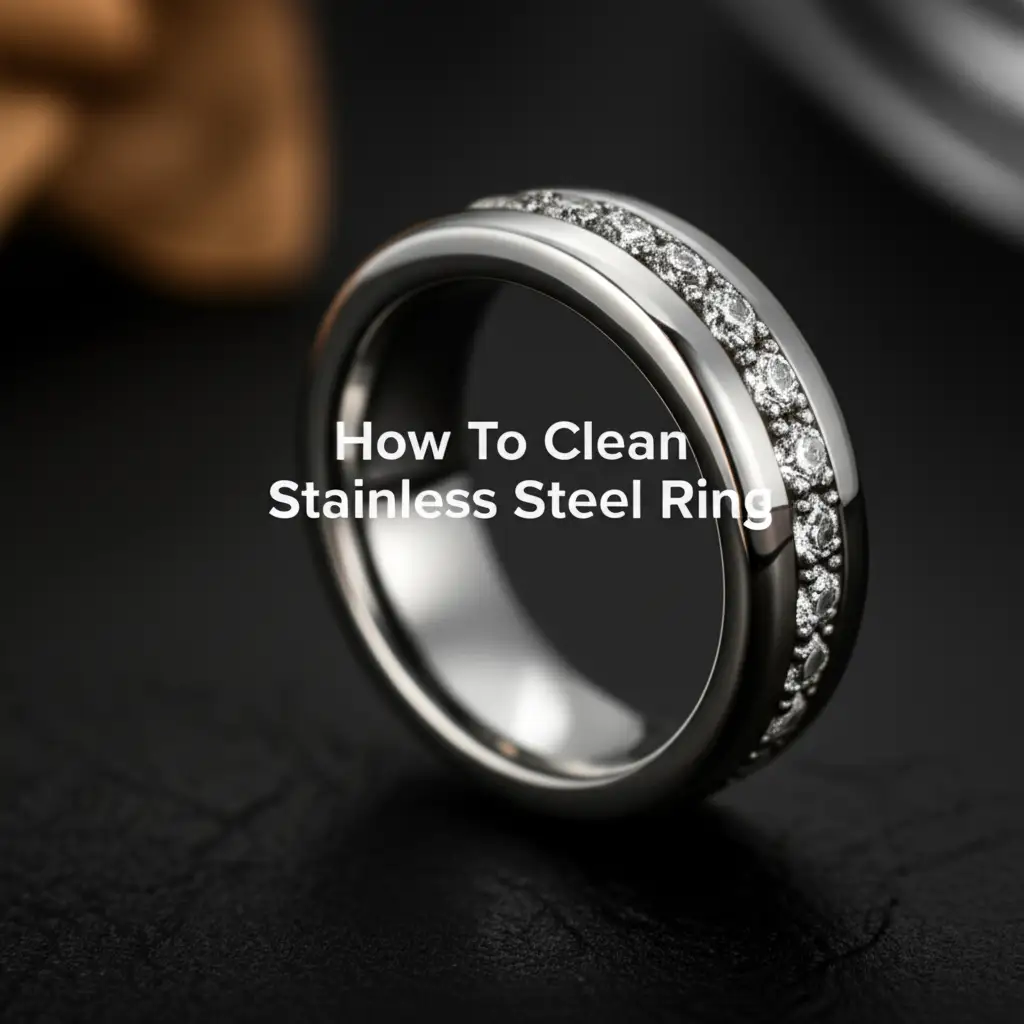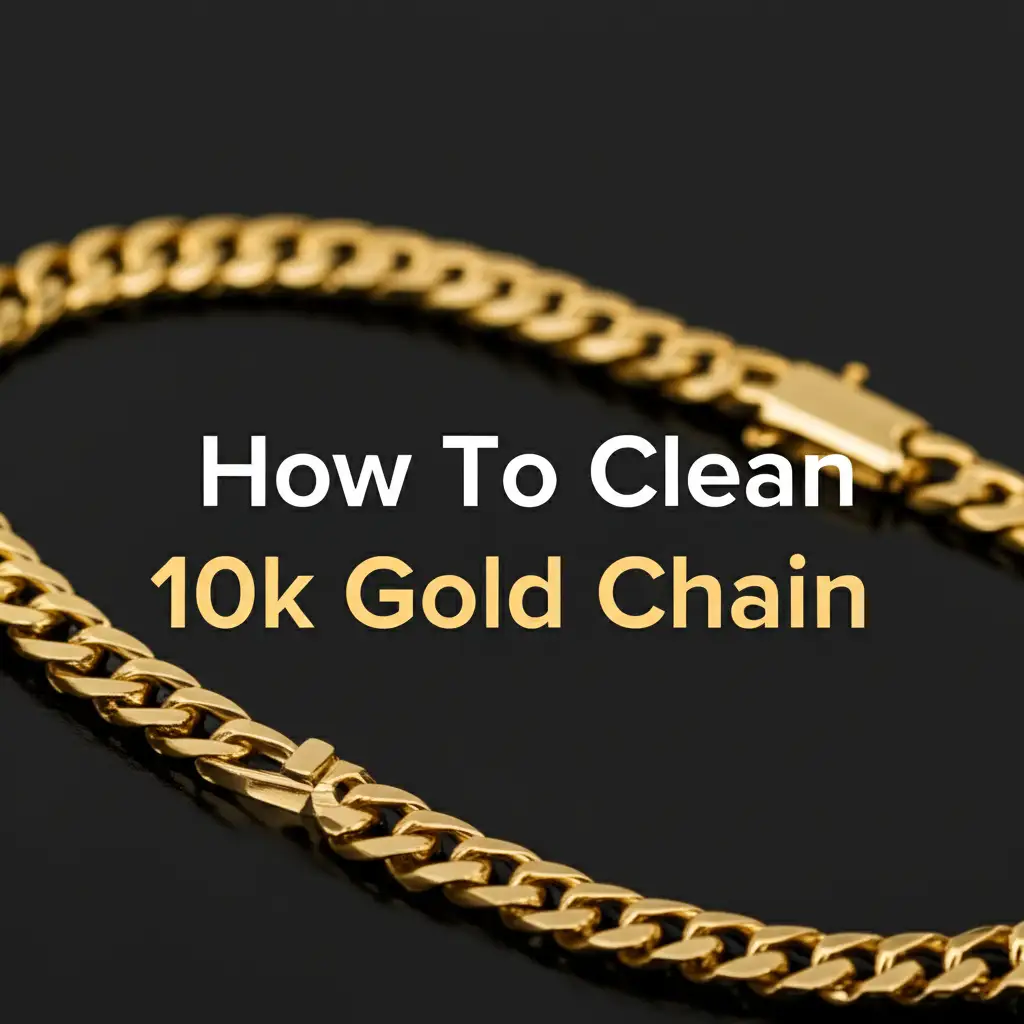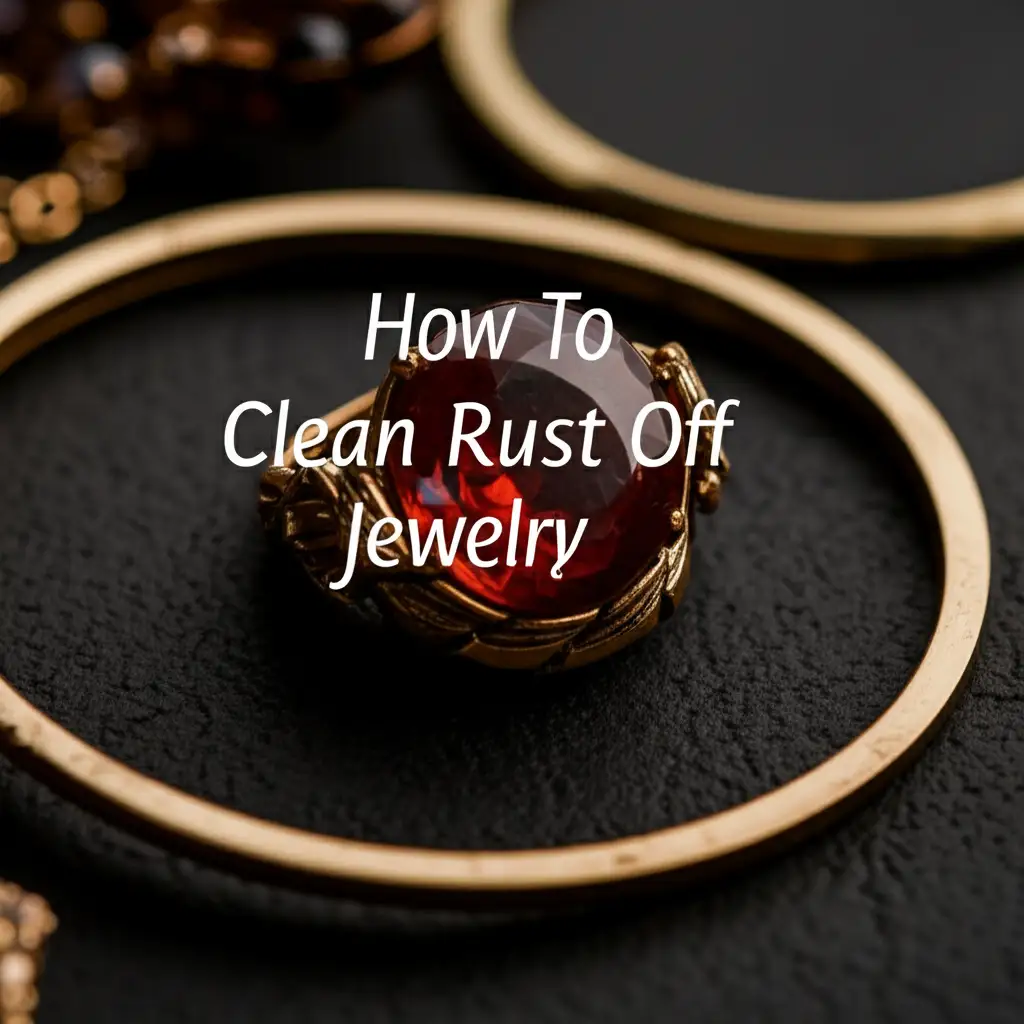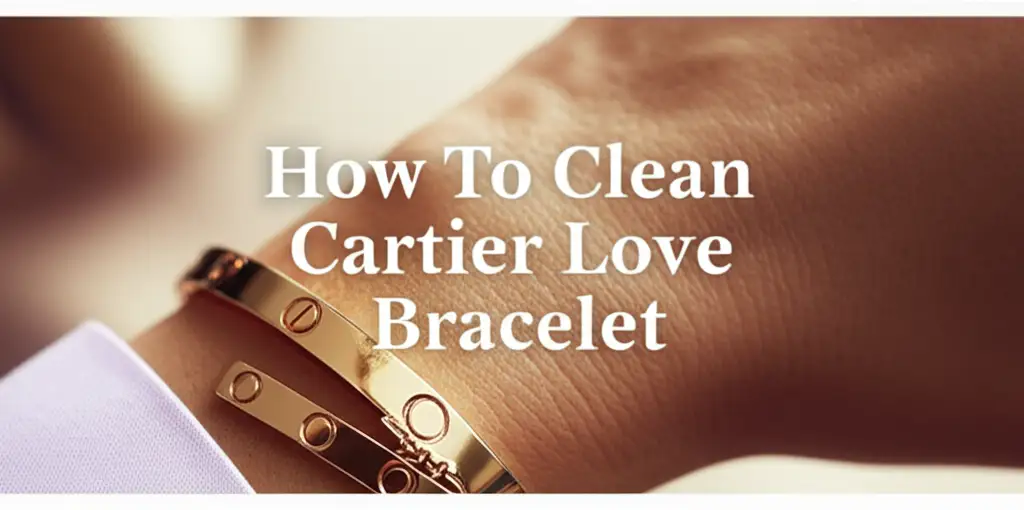· Jewelry Care · 16 min read
How To Clean Lab Created Diamonds
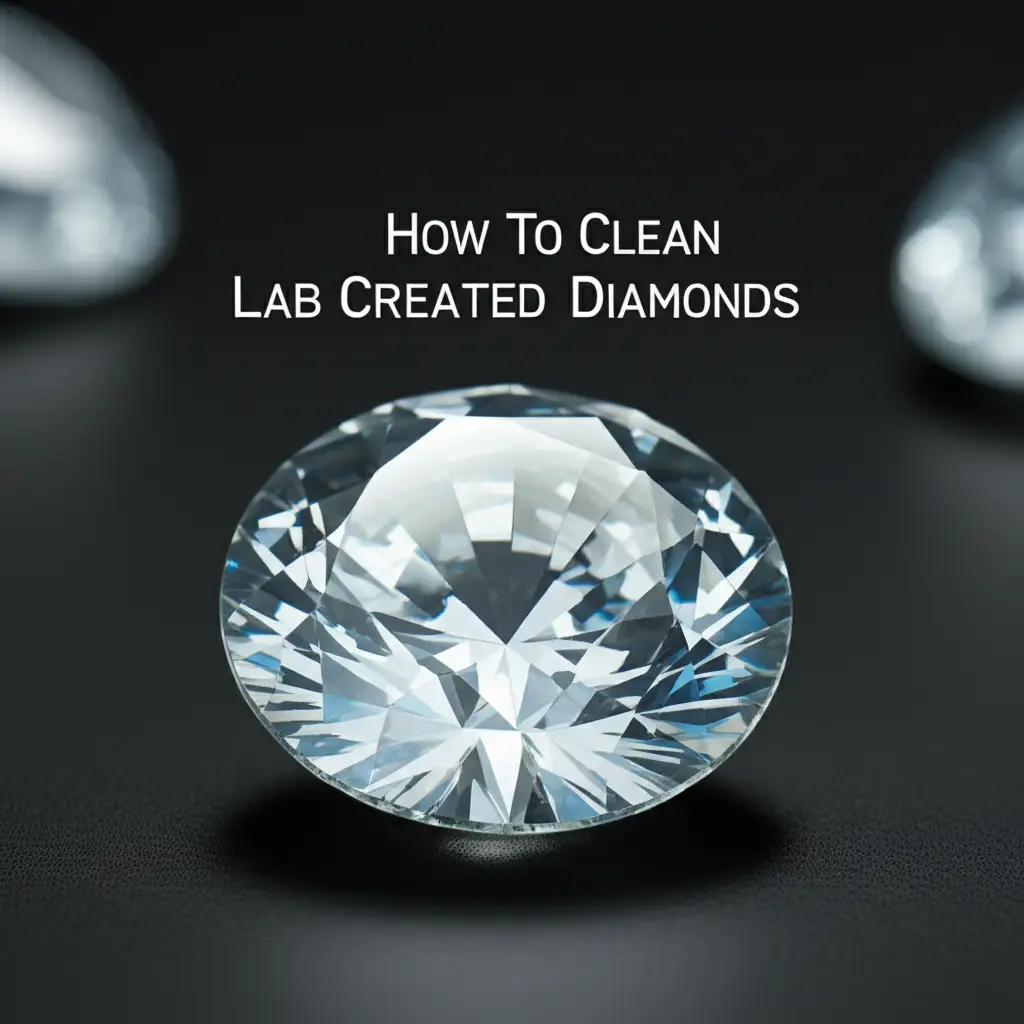
Sparkle Bright: How to Clean Lab Created Diamonds at Home
Your lab created diamond jewelry holds special meaning. These beautiful gems, grown in controlled environments, offer exceptional brilliance. Just like natural diamonds, lab created diamonds attract dirt, oils, and residues from everyday wear. Lotions, soaps, and natural skin oils can dull their sparkle over time. Knowing how to clean lab created diamonds correctly keeps them looking new. Proper care maintains their stunning appearance and ensures lasting shine. This guide will show you simple, safe ways to clean your treasured lab created diamond pieces at home.
Takeaway:
- Use mild soap, warm water, and a soft brush for regular cleaning.
- Avoid harsh chemicals, abrasive cleaners, and extreme temperatures.
- Clean your lab created diamonds regularly to prevent buildup and maintain shine.
- Consider professional cleaning for stubborn grime or complex settings.
How do you clean lab created diamonds?
You clean lab created diamonds using mild dish soap, warm water, and a soft-bristled brush. Gently scrub the diamond and its setting to remove dirt and oils. Rinse it thoroughly under running water and dry it with a lint-free cloth. This simple method safely restores their sparkle.
Understanding Lab Created Diamonds: Why Cleaning Matters
Lab created diamonds are real diamonds. They possess the same chemical, physical, and optical properties as natural diamonds. Scientists grow them in laboratories using advanced technology. This process mimics the conditions deep within the Earth. The result is a diamond that is physically identical to its mined counterpart. They are hard, durable, and brilliant.
Despite their hardness, lab created diamonds still get dirty. They attract oils from your skin and lotions. Soap residue can build up on their surface. Tiny dust particles also stick to them. This buildup creates a film that dulls the diamond’s sparkle. Regular cleaning is important to keep your lab created diamond looking its best. A clean diamond reflects light better. This means more fire, brilliance, and sparkle. Proper cleaning also helps to protect the metal setting. Buildup can sometimes trap moisture, leading to corrosion in certain metals over time.
Think of it like any other valuable item you own. You clean your car to maintain its paint and shine. You dust your furniture to keep it looking fresh. Your lab created diamond jewelry needs similar attention. It shows your care for these precious pieces. A well-maintained diamond lasts longer and looks more beautiful. Cleaning also lets you inspect your jewelry. You can check for loose prongs or damaged settings. Early detection of problems can prevent loss or further damage. So, cleaning is not just about aesthetics. It is a vital part of caring for your lab created diamonds.
Everyday Cleaning: Gentle Methods for Lab Grown Sparkle
Daily wear causes lab created diamonds to lose some of their sparkle. Oils from your skin, hand creams, and even dust settle on the stone. Gentle, regular cleaning keeps them bright. I find this method effective and safe for frequent use. It helps maintain the diamond’s natural brilliance.
Start with a small bowl of warm water. Add a few drops of mild dish soap to the water. Do not use soaps with harsh detergents or moisturizers. These can leave a film on your diamond. Submerge your lab created diamond jewelry in the soapy water. Let it soak for about 20-30 minutes. This helps loosen any accumulated dirt and oils.
After soaking, take a soft-bristled toothbrush. A child’s toothbrush often works well. Gently scrub the diamond. Pay attention to the back of the diamond and around the setting. Dirt often collects in these areas, especially under the stone. Brush softly but thoroughly. You want to remove all grime without scratching the metal.
Rinse the jewelry under warm, running water. Make sure all soap residue is gone. Soap film will make the diamond look cloudy. Once rinsed, dry the diamond with a soft, lint-free cloth. Microfiber cloths are excellent for this. They absorb water well and do not leave fibers behind. Avoid paper towels, which can scratch. Your lab created diamond should now sparkle like new. Repeat this simple process weekly or as needed.
Deep Cleaning Lab Created Diamonds: Restoring Their Brilliance
Sometimes, your lab created diamond needs more than just a quick wash. Stubborn dirt or excessive oil buildup requires a deeper cleaning. This method helps restore maximum brilliance to a very dull stone. It goes beyond the everyday routine. I use this approach when my diamond feels truly grimy.
Begin by preparing a solution of warm water and a slightly stronger, yet still mild, dish soap. You can also add a small amount of ammonia-based window cleaner to the water for extra degreasing power. However, be cautious with ammonia; it is generally safe for diamonds but can harm certain metals or softer gemstones. If your jewelry has other stones or a delicate metal like silver, avoid ammonia. Let your diamond jewelry soak in this solution for up to an hour. For very stubborn dirt, an overnight soak can sometimes work wonders.
After soaking, use a soft-bristled brush to gently scrub the diamond and its setting. Pay extra attention to hard-to-reach areas. The bristles can dislodge embedded dirt. Rinse the jewelry very thoroughly under warm, running water. Ensure all traces of the cleaning solution are completely removed. Any leftover soap or cleaner will leave streaks or a film. This film reduces sparkle.
For optimal drying, you can air dry the piece or use a hairdryer on a cool setting. Then, polish it with a clean, lint-free microfiber cloth. This final polish removes any water spots and enhances the diamond’s luster. If you are cleaning other transparent surfaces around the house, like your windows, you might use different solutions. While vinegar works well for achieving a streak-free finish on surfaces such as glass cleaning, it is not recommended for diamonds due to potential reactions with certain metals or stone coatings. Consider this deep cleaning method monthly or whenever you notice a significant dullness.
Using an Ultrasonic Cleaner for Lab Created Diamonds
Ultrasonic cleaners offer a professional-level deep clean at home. They work by sending high-frequency sound waves through water. These waves create tiny bubbles that dislodge dirt from the diamond’s surface. It is a very effective way to clean lab created diamonds.
- Choose a reputable cleaner: Ensure the cleaner is designed for jewelry.
- Use plain water or a mild solution: Fill the cleaner with warm water. You can add a drop of mild dish soap. Do not use harsh chemicals.
- Place jewelry carefully: Put your lab created diamond jewelry in the basket. Make sure it does not touch the sides or bottom directly.
- Run a short cycle: Most cycles last 1-3 minutes. Check the diamond. If still dirty, run another short cycle.
- Rinse and dry: After cleaning, rinse the diamond under warm water. Dry it with a lint-free cloth.
Ultrasonic cleaners are great for removing trapped dirt. However, use them with caution. Inspect your jewelry before and after. Ensure all stones are secure in their settings. Loose prongs can become looser during ultrasonic cleaning. If you are concerned about security, stick to manual cleaning methods.
What to Avoid When Cleaning Lab Created Diamonds
Knowing what not to do is just as important as knowing what to do. Certain substances and methods can harm your lab created diamond or its setting. Avoiding these ensures your jewelry stays beautiful and safe. I always keep these warnings in mind when caring for my pieces. My goal is to protect the diamond and the metal around it.
First, stay away from harsh household cleaners. Products like bleach, chlorine, or abrasive powders are dangerous. These chemicals can react with the metal setting, causing discoloration or damage. They might also dull the diamond’s surface over time, even though diamonds are hard. Ammonia can be okay in very dilute solutions for a short soak, but pure ammonia is too strong. For instance, while some people might use strong solutions for tasks like cleaning their shower with vinegar, these solutions are far too aggressive for delicate diamond jewelry. Always opt for very mild, pH-neutral soaps.
Second, never use abrasive materials. Toothpaste, baking soda, or scrubbing pads can scratch the metal setting. They can also dull the diamond’s facets. Even though diamonds are the hardest known material, the softer metal of the setting is vulnerable. Use only soft cloths and soft-bristled brushes. Your diamond needs gentle care, not harsh scrubbing.
Third, avoid extreme temperature changes. Sudden shifts from hot to cold or vice versa can stress the metal. This can loosen prongs or even crack certain gemstones if your jewelry has them. Always use warm, not boiling, water for cleaning. Let your jewelry cool naturally if it has been exposed to heat.
Lastly, be careful with chemical exposure in general. Take off your lab created diamond jewelry before swimming in chlorinated pools or using strong cleaning products around the house. These chemicals can erode metal over time and dull the diamond. Even common household tasks, like managing buildup, can sometimes require specific methods. For example, ensuring your dishwasher filter is clean helps prevent residue in the appliance, much like rinsing your diamond carefully prevents residue on the stone. However, the solutions used for a dishwasher are very different from what’s safe for jewelry. Your lab created diamond is a valuable investment; treat it with the care it deserves to keep it sparkling for years.
Essential Tools for Lab Diamond Cleaning
Having the right tools makes cleaning your lab created diamonds easy and effective. You do not need many items. Simple, readily available supplies are often the best. These tools help you clean thoroughly without causing any damage. I have found these basic tools indispensable for regular care. They ensure my diamonds always look their best.
The most basic and essential tool is a soft-bristled toothbrush. A child’s toothbrush works perfectly. Its bristles are gentle enough not to scratch the diamond or its metal setting. Yet, they are firm enough to dislodge dirt and grime from crevices. Always dedicate one toothbrush just for jewelry cleaning. This prevents transferring any toothpaste residue or other contaminants.
Next, you need a mild liquid dish soap. Look for a soap that is free of harsh chemicals, dyes, and moisturizers. These additives can leave a film on your diamond, reducing its sparkle. Dawn Original or similar plain dish soaps are good choices. A small amount goes a long way. This soap effectively breaks down oils and grease without harming your jewelry.
A lint-free cloth is crucial for drying. Microfiber cloths are ideal. They are highly absorbent and leave no tiny fibers behind. Paper towels or rough towels can scratch the metal or leave lint that dulls the shine. After rinsing, a good lint-free cloth brings out the true brilliance of your lab created diamond.
For soaking, a small bowl is perfect. Choose a clean, non-metallic bowl. It provides a safe place to immerse your jewelry in the cleaning solution. A small colander or a fine mesh strainer is also useful for rinsing. This prevents accidentally dropping your jewelry down the drain. Always plug the sink drain when rinsing for extra security.
Lastly, consider a jewelry polishing cloth. These cloths often come treated with a mild polishing agent. They are excellent for a quick polish between cleanings. They remove light smudges and bring back luster to the metal. However, use them sparingly on the diamond itself to avoid any potential residue. With these simple tools, you can confidently keep your lab created diamonds sparkling.
Professional Cleaning vs. DIY for Lab Diamonds
You have options for cleaning your lab created diamonds. You can do it yourself at home, or you can take them to a professional. Both methods have benefits. Knowing when to choose which option helps you make the best decision for your valuable jewelry. I use a mix of both to ensure my diamonds receive the best care.
DIY cleaning is perfect for regular maintenance. It is convenient, cost-effective, and easy to do. The methods discussed earlier, like using mild soap and water, are safe for everyday grime. They prevent buildup and keep your diamond looking fresh. I recommend weekly home cleaning to maintain consistent sparkle. This proactive approach reduces the need for frequent professional interventions. It empowers you to care for your jewelry directly.
Professional cleaning offers a deeper, more thorough clean. Jewelers have specialized equipment like industrial-strength ultrasonic cleaners and steam cleaners. They can reach dirt that home methods might miss. Professionals also inspect your jewelry for damage, like loose prongs or worn settings. They can fix these issues on the spot. I take my lab created diamonds for professional cleaning once or twice a year. This ensures a comprehensive clean and peace of mind regarding the jewelry’s structural integrity.
When should you consider professional cleaning?
- Stubborn grime: If your diamond still looks dull after thorough home cleaning.
- Loose stones: If you notice any wiggling or movement in the diamond or other stones.
- Complex settings: Intricate designs can be hard to clean effectively at home.
- Metal discoloration: If the metal setting appears tarnished or discolored beyond simple polishing.
- Pre-event shine: Before a special occasion, a professional clean ensures maximum sparkle.
While professional services are valuable, never feel pressured to use them too often. Most lab created diamond owners find that a combination of regular home care and annual professional checks works best. Your jeweler can also advise you on the specific needs of your piece.
Maintaining Your Lab Created Diamonds’ Shine: Best Practices
Keeping your lab created diamonds sparkling goes beyond just cleaning. It also involves how you wear, store, and treat your jewelry daily. Following these best practices will significantly extend the time between deep cleans. It will also help preserve the beauty and integrity of your lab created diamonds for a lifetime. I incorporate these habits into my routine to protect my cherished pieces.
First, remove your jewelry during certain activities. Take off your rings before doing household chores. This includes washing dishes, gardening, or using cleaning products. Harsh chemicals, abrasive surfaces, and accidental bumps can damage both the diamond and its setting. Similarly, remove jewelry before showering or swimming. Soaps and shampoos can leave a film. Chlorine in pools can erode certain metals over time. While simple scrubbing is good for many household items, like cleaning stains off walls, a diamond needs a different approach.
Second, apply lotions and cosmetics before putting on jewelry. Lotions, perfumes, hairspray, and makeup contain oils and chemicals. These products can easily coat your lab created diamond, creating a greasy film. This film dulls the diamond’s brilliance quickly. Put on your jewelry as the final step when getting ready. This small change prevents a lot of grime buildup.
Third, store your lab created diamonds properly. Diamonds are hard, but they can scratch other jewelry. Store each piece separately. Use a soft cloth pouch, a jewelry box with individual compartments, or a soft-lined container. This prevents scratching other gems or metals. It also protects your diamond from dust and accidental impacts. Humidity can also be a factor for certain metals, so a dry, cool place is ideal.
Fourth, inspect your jewelry regularly. Before and after cleaning, take a moment to look at your piece closely. Check for loose prongs. See if the diamond wiggles in its setting. Look for any cracks or damage to the stone. Early detection allows for timely repairs. This prevents losing your diamond or further damage. A jeweler can easily re-tighten prongs. This proactive approach saves you worry and money in the long run. By adopting these simple habits, you ensure your lab created diamond retains its mesmerizing sparkle day after day.
FAQ Section
How often should I clean my lab created diamond?
You should clean your lab created diamond jewelry weekly for general maintenance. If you wear it daily, especially on your hands, more frequent light cleaning is beneficial. A deeper clean, either at home or professionally, is good every few months. This keeps oil and grime from building up too much. Regular cleaning maintains the diamond’s sparkle.
Can I use an ultrasonic cleaner for lab created diamonds?
Yes, you can use an ultrasonic cleaner for lab created diamonds. These cleaners are effective at removing dirt from tiny crevices. Use plain water or a mild jewelry cleaning solution. Always inspect your diamond’s setting beforehand. Do not use an ultrasonic cleaner if the diamond is loose or if your jewelry has other fragile gemstones.
Are there any chemicals I should absolutely avoid for lab diamonds?
Yes, avoid harsh chemicals like bleach, chlorine, and abrasive cleaners. These can damage the metal setting or dull the diamond’s surface. Even though diamonds are hard, certain chemicals can react with residues or coatings. Stick to mild dish soap or specialized jewelry cleaners. Never use toothpaste or baking soda as they are abrasive.
Does cleaning lab created diamonds damage them?
No, cleaning lab created diamonds with the correct methods does not damage them. In fact, regular, gentle cleaning preserves their beauty. Using mild soap, warm water, and a soft brush is safe. Damage typically occurs from using harsh chemicals, abrasive materials, or improper handling. Follow recommended steps to protect your diamond.
How do I store my lab created diamond jewelry after cleaning?
Store your lab created diamond jewelry in a clean, dry place. Use a soft cloth pouch or a jewelry box with separate compartments. This prevents your diamond from scratching other jewelry. It also protects it from dust and environmental factors. Proper storage helps maintain its cleanliness and prevents new grime buildup.
Conclusion
Keeping your lab created diamonds sparkling is easy and rewarding. These beautiful gems, born from science, offer unmatched brilliance and durability. Yet, daily life leaves its mark. Oils, lotions, and dust gather on the surface, dulling their inherent fire. My guide shows you how to bring back that stunning shine with simple, safe steps.
Remember to prioritize gentle cleaning methods. Mild dish soap, warm water, and a soft-bristled brush are your best friends for regular maintenance. Always avoid harsh chemicals, abrasive materials, and extreme temperatures. These can harm your precious lab created diamonds or their intricate settings. Integrating good habits into your routine, like removing jewelry during chores and proper storage, will also contribute greatly to their lasting brilliance.
Whether you choose a quick home clean or an occasional professional service, caring for your lab created diamond jewelry ensures its lasting beauty. You invested in a piece of lasting elegance; now, empower yourself to maintain its stunning sparkle. Keep your lab created diamonds radiant for all to see. Your beautiful jewelry deserves this simple care.
- Lab Created Diamonds
- Diamond Cleaning
- Jewelry Cleaning

